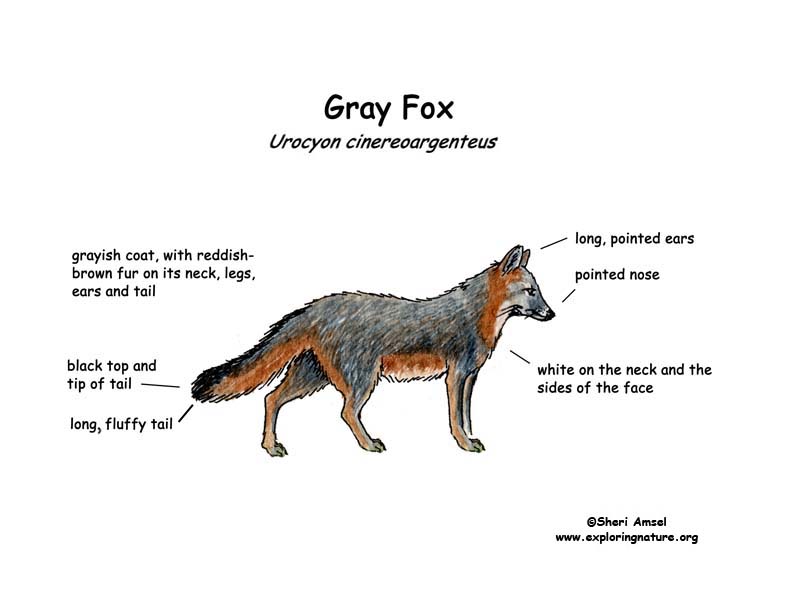

Gray fox live throughout Southern Canada down to Mexico and Central America with the exception of the northern Rockies in Montana, Wyoming, Idaho and Washington State.
They are found in mixed forests, brushy areas, and swamps.
The gray fox has a grayish coat, with reddish-brown fur on its neck, legs, ears and tail. They also have white on their neck and the sides of their faces. They weigh about 10 pounds and are shorter than the red fox but stockier (more solid). The top of the tail and its tip are black.
They hold their tail out straight when they walk, like the red fox. They are active at night (nocturnal) and are much shyer than the red fox, so seen much less. They can carry rabies.
They eat small animals, fruit and scavenge dead animals (carrion).
Their main predator is man.
The females are pregnant about 7 weeks (gestation). They have 4-5 pups in a brush nest, rocky crevice or tree cavity. Both parents care for their young.
They live about 6 years in the wild. They are not threatened.
Kingdom: Animalia
Phylum: Chordata
Subphylum: Vertebrata
Class: Mammalia
Order: Carnivora
Suborder: Caniformia
Family: Canidae
Genus: Urocyon
Species: Urocyon cinereoargenteus
When you research information you must cite the reference. Citing for websites is different from citing from books, magazines and periodicals. The style of citing shown here is from the MLA Style Citations (Modern Language Association).
When citing a WEBSITE the general format is as follows.
Author Last Name, First Name(s). "Title: Subtitle of Part of Web Page, if appropriate." Title: Subtitle: Section of Page if appropriate. Sponsoring/Publishing Agency, If Given. Additional significant descriptive information. Date of Electronic Publication or other Date, such as Last Updated. Day Month Year of access < URL >.
Amsel, Sheri. "Fox (Gray)" Exploring Nature Educational Resource ©2005-2024. December 13, 2024
< http://mail.exploringnature.org/db/view/396 >

